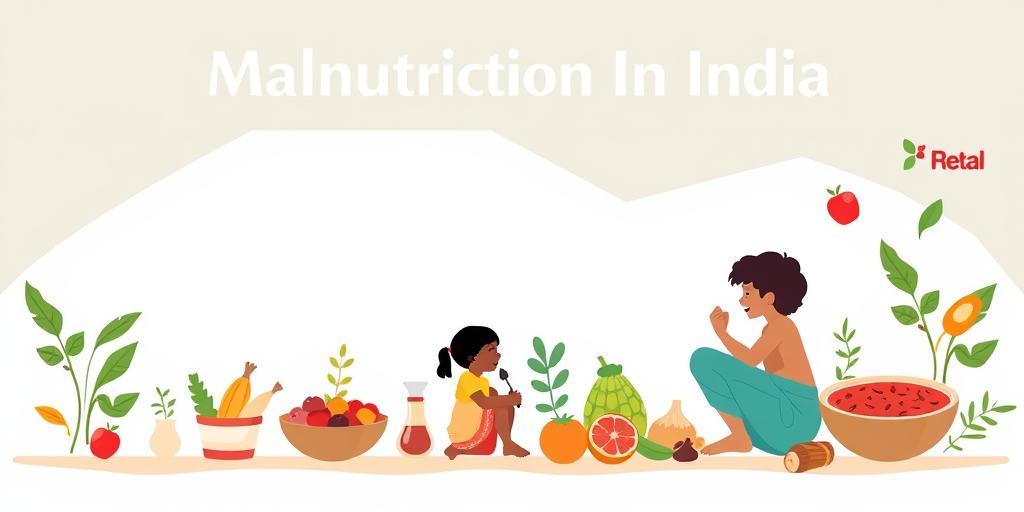Malnutrition in India: A 2025 Call to Action
Malnutrition remains a critical challenge in India, affecting a significant portion of the population, particularly children and women. Despite economic progress, the country continues to grapple with alarming rates of undernutrition, micronutrient deficiencies, and related health issues. This article examines the current state of malnutrition in India, its underlying causes, and the urgent actions needed to achieve substantial improvements by 2025.
The Current State of Malnutrition in India
India bears a substantial burden of the global malnutrition crisis. According to the National Family Health Survey (NFHS-5) 2019-21:
- Stunting: 35.5% of children under five years are stunted, indicating chronic undernutrition.
- Wasting: 19.3% of children under five years are wasted, reflecting acute undernutrition.
- Underweight: 32.1% of children under five years are underweight.
- Anemia: 57% of women aged 15-49 years are anemic.
These figures highlight the widespread prevalence of malnutrition across different age groups and genders, posing significant threats to public health and socioeconomic development.
Underlying Causes of Malnutrition
Several factors contribute to the persistent problem of malnutrition in India:
- Poverty and Food Insecurity: Poverty limits access to nutritious food, especially among marginalized communities. Many families cannot afford a balanced diet that meets their nutritional needs.
- Inadequate Infant and Young Child Feeding Practices: Suboptimal breastfeeding practices, delayed introduction of complementary foods, and poor dietary diversity contribute to undernutrition in children.
- Poor Sanitation and Hygiene: Lack of access to clean water, sanitation facilities, and proper hygiene practices leads to infectious diseases, which exacerbate malnutrition.
- Gender Inequality: Women often face discrimination in access to food, healthcare, and education, affecting their nutritional status and that of their children.
- Lack of Awareness: Limited awareness about nutrition, health, and hygiene practices among communities hinders efforts to improve dietary habits.
Call to Action: Achieving Progress by 2025
Addressing malnutrition requires a multi-faceted approach involving government, civil society organizations, healthcare providers, and communities. Key actions needed to achieve substantial progress by 2025 include:
- Strengthening Nutrition-Specific Interventions:
- Promoting optimal infant and young child feeding practices: Encourage exclusive breastfeeding for the first six months and appropriate complementary feeding thereafter.
- Providing micronutrient supplementation: Ensure widespread distribution of iron, folic acid, and vitamin A supplements to vulnerable populations.
- Managing acute malnutrition: Strengthen community-based management of acute malnutrition (CMAM) programs to treat severely malnourished children.
- Addressing Nutrition-Sensitive Factors:
- Improving food security: Enhance access to nutritious food through targeted food subsidy programs and agricultural interventions.
- Enhancing water, sanitation, and hygiene (WASH): Invest in infrastructure and promote behavior change to improve access to clean water and sanitation facilities.
- Empowering women: Promote gender equality and women’s empowerment through education, economic opportunities, and access to healthcare services.
- Strengthening Health Systems:
- Integrating nutrition services into primary healthcare: Train healthcare providers to deliver nutrition counseling and support at the community level.
- Improving data monitoring and surveillance: Strengthen systems for tracking malnutrition indicators and program outcomes to inform policy and programming.
- Fostering Multi-Sectoral Coordination:
- Establishing inter-departmental coordination mechanisms: Ensure collaboration among various government departments, including health, education, social welfare, and agriculture.
- Engaging civil society organizations: Partner with NGOs and community-based organizations to implement nutrition programs and mobilize communities.
Conclusion
Malnutrition in India is a complex problem that demands urgent attention and concerted action. By implementing evidence-based interventions, addressing underlying causes, and fostering multi-sectoral collaboration, India can make significant strides towards reducing malnutrition rates and improving the health and well-being of its population by 2025. It is imperative to prioritize nutrition as a key development agenda and invest in programs that ensure every child and woman has the opportunity to thrive.
